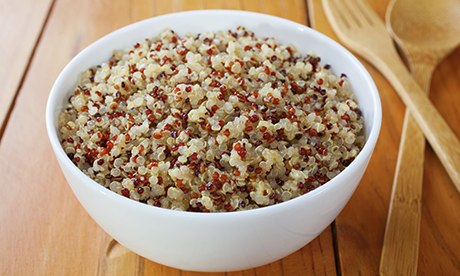
Recovery is a fundamental element of training and racing, but is underestimated by many athletes. It is particularly important for those who train multiple times per day, six days a week, as inadequate recovery can reduce the body's capacity to maintain high-volume and high-intensity training sessions. In the long term, this can lead to fatigue, illness, injury and compromised performance.
During training, muscle proteins are broken down, and glycogen (carbohydrate) stores and electrolyte levels are reduced. Proper recovery allows the muscles to repair and adapt to the demands being made of them. This, in turn, leads to improvements in performance. For optimal recovery the body requires the right kinds of food in the right amounts.
Consumption of carbohydrates and fluids (including electrolytes) after exercise is recommended. Both are particularly important for those completing endurance exercise, when the likelihood of glycogen depletion and dehydration is high. The role of protein however is less well understood. Consumption of rapidly digestible, high-quality proteins such as whey and soy following intense training or racing will aid muscle repair and muscle soreness.
Protein also helps the body adapt to training, for enhanced future performance. There is now a trend for using flavoured milk to help with recovery after exercise. These products areA often high in sugar, and casein – a protein found in milk – is slow-digesting.
Although the type and quantity of nutrients required for recovery is variable, the timing is well established. The body is particularly receptive to nutrients in the 30-minute window immediately after exercise, as the enzymes and transporters in our muscles responsible for glycogen and protein synthesis are highly active at this point.
It is difficult to make specific recommendations because of variations in training, but a typical strategy following an endurance session is to consume 1g per kg body mass of carbohydrate (e.g. 70g for a 70kg athlete), 20 g of high quality protein and 1.5L of fluid (consumed gradually) for every 1kg body mass lost during exercise. Athletes may weigh themselves before and after sessions to measure this. Carbohydrate sources include pasta, rice, pita bread and quinoa. High-quality protein sources include grilled chicken, turkey, salmon and free-range eggs. In addition, a fluid containing electrolytes can help replace those lost through sweat.
This is an ideal scenario, but sometimes more practical options are required, such as carbohydrate and protein shakes, carbohydrate and electrolyte drinks or protein bars. These should consist of a fast-digesting carb such as maltodextrin and a protein (whey or soy) source, and should be followed soon after by a meal that adheres to the above guidelines.

